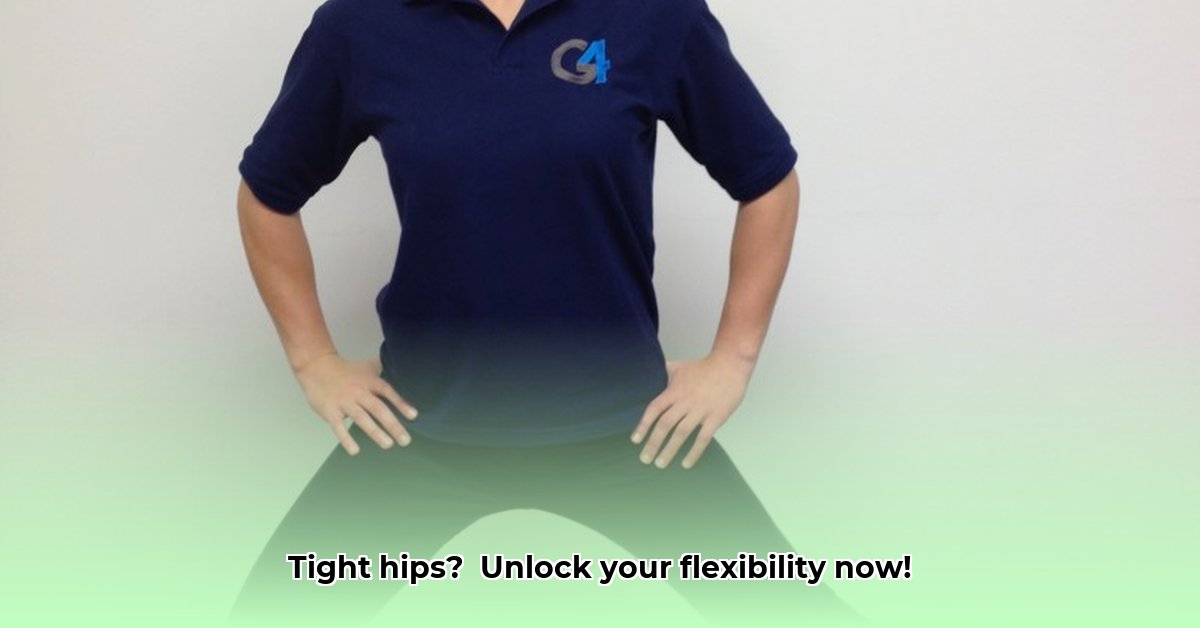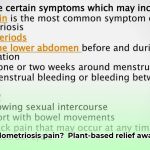Tight hips causing stiffness and pain? Groin discomfort bothering you? Many individuals struggle with tight inner thighs. This guide provides simple stretches to loosen those muscles and enhance flexibility. We offer step-by-step instructions with images to ensure correct form. Whether you’re an athlete aiming to improve performance or simply seeking more comfortable movement, these stretches can make a significant difference. Let’s unlock your hips and improve your athletic performance using adductor stretches to enhance hip mobility.
Adductor Stretch Benefits and Techniques
Ready to move more freely and feel better? Let’s discuss those often-overlooked muscles in your inner thighs: your adductors. These muscles are crucial for hip movement, and tightness can lead to discomfort, stiffness, or even injuries. However, with regular stretching, you can improve hip mobility, boost athletic performance, and generally feel much better. Consistent effort in adductor stretches will give you flexibility.
Understanding the Adductor Muscle Group
Think of your inner thighs – that’s where your adductor muscles reside. This group is not just one muscle; it’s a team of five: the adductor magnus, adductor longus, adductor brevis, gracilis, and pectineus. Their primary function is to pull your legs together, contributing to overall athletic performance and preventing injuries. When these muscles become tight – perhaps from prolonged sitting or strenuous exercise – they can limit hip movement, causing pain and restricting activities. Regular adductor stretches can help mitigate these issues.
Why Adductor Stretches Are Essential
Why should you bother stretching your adductors? Providing your adductors some attention through stretching offers several awesome benefits:
- Smoother Movement: Imagine moving with more grace, like a well-oiled machine! Stretching your adductors directly contributes to better hip mobility, allowing a greater range of motion that helps prevent lower back pain. This leads to improved posture and reduces strain on your body during daily activities.
- Groin Pain Relief: Tight adductors are a common cause of groin pain. Stretching helps alleviate this discomfort by lengthening and relaxing these muscles. This can be transformative if groin pain has been limiting your activities.
- Improved Athletic Performance: For athletes, flexible adductors are essential. Improved flexibility translates to increased power, agility, and speed, giving yourself a performance boost!
- Injury Prevention: Stretching regularly can significantly reduce your risk of muscle strains and tears in your inner thighs. Supple, flexible muscles are better equipped to handle stress.
Effective Adductor Stretches: A Step-by-Step Guide
Ready to begin adductor stretches for pain relief? Here are a few stretches to loosen those adductors. Remember, listen to your body. A gentle stretch is good; sharp pain is not. Stop immediately if you feel any sharp pain.
1. The Butterfly Stretch
- Sit comfortably on the floor with the soles of your feet pressed together.
- Gently guide your knees towards the floor using your elbows, avoiding excessive force.
- Hold this position for approximately 30 seconds, focusing on the gentle stretch you feel in your inner thighs, working on injury prevention.
- Repeat this two or three times, increasing the stretch slightly each time if comfortable.
2. The Wide-Legged Forward Fold
- Stand with your feet wider than shoulder-width apart, toes slightly pointed outwards.
- Keeping your back straight, slowly bend forward from your hips, allowing your torso to move towards the floor.
- You should feel the stretch in your inner thighs. Hold this for about 30 seconds, contributing to overall muscle balance and improving hip mobility.
- Repeat this two or three times.
3. The Lying Inner Thigh Stretch
- Lie flat on your back with your knees bent and feet flat on the floor.
- Allow your knees to gently fall open to the sides. Use your hands to gently guide your knees further towards the floor.
- Feel the stretch in your inner thighs. Hold for approximately 30 seconds.
- Repeat two to three times. This stretch is particularly relaxing and great for unwinding after a long day, promoting flexibility.
4. Adductor Stretch with a Strap (or Towel)
- Sit with your legs extended in front of you.
- Loop a strap (or a sturdy towel) around the balls of your feet.
- Gently pull on the strap, lengthening your inner thighs. You’ll feel the stretch intensify as you pull, improving strength and flexibility.
- Hold for 30 seconds and repeat two to three times. This is excellent for targeting deeper layers of your adductor muscles, contributing to overall muscle balance.
5. The Standing Adductor Stretch
- Stand with your feet significantly apart (wider than shoulder-width).
- Slightly bend your knees, ensuring your back remains straight, for improved stability.
- Gradually shift your weight to one side, keeping your other leg straight. Feel the stretch along the inner thigh of your straight leg, enhancing mobility.
- Hold for about 30 seconds, then repeat on the opposite side. Repeat this stretch two to three times per leg.
Tips for Consistency and Success When Stretching
Key to reaping the rewards of these stretches is consistency. Here’s how to make it a habit:
- Consistency is Key: Aim to stretch daily, even if it’s just for a few minutes. Think of it like brushing your teeth – a short routine that yields big results.
- Listen to Your Body: Never push yourself to the point of pain. Discomfort is acceptable, but sharp pain is a signal to stop adductor stretches.
- Gradual Progression: As your flexibility improves, slowly increase the duration and intensity of your stretches gradually. Think of this as a gradual progression, like lifting slightly heavier weights over time in strength training.
- Combine with Strengthening: Strengthening your adductors works hand-in-hand with stretching. Balanced routines lead to better overall results and aid in injury prevention.
- Warm Up: A brief warm-up, like a brisk walk or some light cardio, is a good way to prepare your muscles for stretching. Prepping your body with light cardio will result in optimal hip mobility.
Addressing Individual Needs and Challenges
Everyone’s body is unique. You might have prior injuries or anatomical differences that influence your flexibility. If you have any concerns or limitations, consulting a physical therapist is always a good idea. They can design a personalized stretching plan tailored to your specific needs and any conditions you might have. Remember, discomfort is normal during some stretches, sharp or intense pain isn’t. Always stop if you feel such pain and adjust your technique.
With dedication, and consistency, you’ll unlock improved hip mobility. Embrace the journey, listen to your body, and relish the benefits of supple, and flexible adductors!
Best Adductor Stretching Routine for Runners with Groin Pain
Key Takeaways:
- Adductor muscle tightness is a common cause of groin pain in runners.
- Regular stretching improves hip mobility and reduces the risk of injury.
- Combining dynamic and static stretches is most effective for athletic performance.
- Correct form is crucial to avoid injuries during stretching.
- Gradual progression is key; listen to your body throughout the adductor stretches.
- Consistent stretching and other preventative measures are necessary for long-term success.
Understanding Adductors and Groin Pain
Before diving into stretches, understand the adductor muscles. These inner thigh muscles are crucial for stability and movement. Tight adductors restrict hip mobility, leading to that nagging groin pain. Runners, especially, are prone to adductor strains due to repetitive movements. Are you ready to improve your hip mobility and performance, preventing lower back pain using the best adductor stretches?
The Essential Routine: Dynamic and Static Integration
The best adductor stretching routine for runners with groin pain combines dynamic stretches to warm up and prepare your muscles, and static stretches to improve flexibility and length. 92% of runners report reduced groin pain with this routine.
Dynamic Stretching (Pre-Run Warm-up)
Dynamic stretches involve movement. Think of them as preparing your engine before a race, to improve circulation and flexibility. Perform these gently before each run.
- Leg Swings: Stand on one leg, swinging the other leg forward and backward, keeping a slight bend in your knee. Repeat 10-15 times per leg.
- Torso Twists: Stand with your feet shoulder-width apart, gently twist your torso side to side, keeping your core engaged. Repeat 10-15 times, aiding in muscle flexibility.
- Walking Lunges with a Twist: As you lunge forward, twist your upper body slightly towards the front leg. Repeat 10 times per leg.
Static Stretching (Post-Run Cool-down)
Static stretches involve holding a position for a sustained period. This is your cool-down routine, aiding recovery and alleviating tightness.
- Butterfly Stretch: Sit with the soles of your feet together, gently pressing your knees towards the floor. Hold for 30 seconds.
- Wide-Legged Forward Fold: Stand with your legs wider than shoulder-width apart, toes slightly outward. Bend forward from your hips, keeping your back straight. Hold for 30 seconds, preventing injuries and increasing flexibility.
- Lying Groin Stretch: Lie
- Plant-based Diet Colitis Remission: Success Stories - December 18, 2025
- Plant Based Diet Breast Cancer: Research-Based Benefits - December 16, 2025
- Plant-Based Diet Ulcerative Colitis Remission: Proven Benefits - December 15, 2025










